Olympus has always been one of the trend setters for compact cameras from their Olympus 35 rangefinder, the Trip 35, the XAs and right up to µ[mju:] series. But my current favourite is a simpler fixed focus, half frame number that is often overlooked.
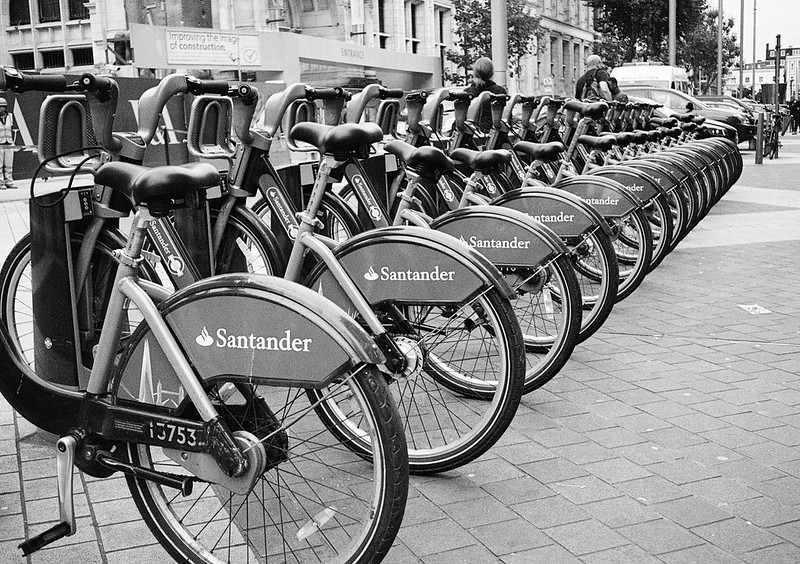
If you’ve followed my blog you’ll know I’ve used a shed load of Olympus compacts (I’ve not even listed my sublime XA or the µ[mju:]zoom I once owned) some great and some not quite so. I suspect like me you’ll end up comparing cameras with Olympus models even if you aren’t a fan of them. So it’s not a surprise that an Olympus has been in my camera bag more often than not in recent months – but it’s not a classic like the Trip or my XA. It is a more mundane spec’d PEN EE-2.
The PEN series of half frame cameras arrived in 1959. Olympus realised they could make more compact cameras than conventional full frame numbers and set the craze for half frame cameras which other Japanese manufactures soon followed in the 1960’s. If you’re unfamiliar with the half frame the camera use conventional 35mm film but takes shots with a frame size of 24x18mm (essentially 2 shots per standard frame). Half frame cameras started to die out from the 70’s as full frame compacts got smaller, but the PEN series survived into the 1980’s
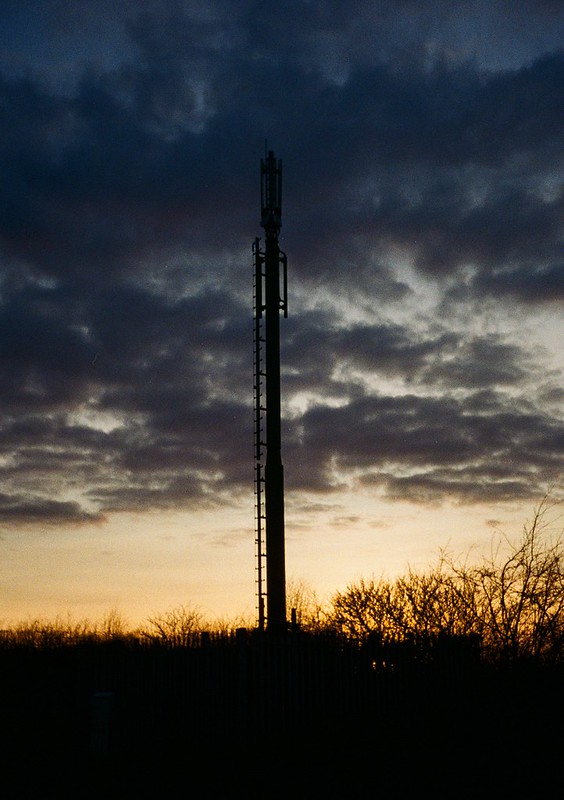
The series included the PEN F SLR camera often hailed as a classic and would go on to influence Olympus’s current digital CSC cameras. However Olympus also aimed for the snap shot market and developed the PEN E series which used automatic selenium cell metering.
The original PEN EE when launched in 1961 was arguably ground breaking as one of the first true point and shoots with automatic metering. Our updated EE-2 was launched in 1968. Both share the same 28mm 1:3.5 D.Zuiko 4 element lens (equivalent to ~40mm full frame) but the EE-2 adds a hot shoe, better ISO range and an updated exposure system. This was lifted from their zone focus brother the PEN EES, a camera that was used as the basis of the mighty Olympus Trip 35.
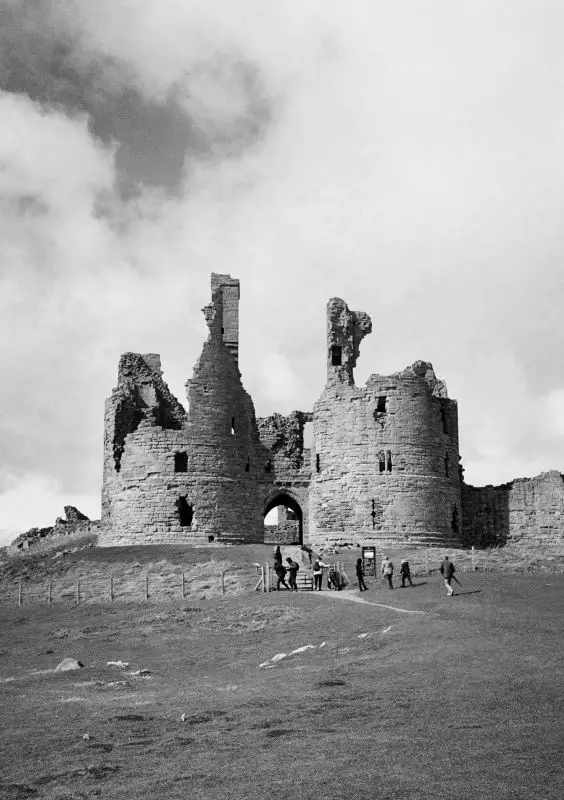
This means the EE-2 shares the same styling and auto exposure mechanism as the mighty Trip. At first glance the fact that the cameras have just 2 shutter speeds (1/40 and 1/200 secs) seems quite poor compared to many cameras that launched around the same time with a plethora of speeds. But that’s missing the beauty. Olympus recognised with both fixed focus and to a lesser extent zone focus cameras, the key is keeping the depth of field as big as possible but avoiding being too small to trigger diffraction. So in bright conditions (>13EV 100) the shutter speed stays locked at 1/200 sec with the aperture widening as light level reduce to about f/8. When light levels fall to around 13EV or below the camera switches to 1/40 sec shutter and an aperture of f/11 (minimising diffraction) . The aperture widens in response to falling light levels from 13 EV100 down.
When light falls below the range of the camera a red flag appears in the viewfinder and the shutter is locked. Just like the Trip you can chance a shot by turning the camera off automatic and setting it to the widest aperture of for flash (f/3.5) and you can exposure lock by half depressing the shutter. Also like the Trip you can shot quasi manually at 1/40 by using the flash setting but bear in mind the meter still limits the maximal opening of the aperture so if you set to f/3.5 and try to shoot in bright light, it won’t open that far. And as you’d expect you don’t need batteries to power it.
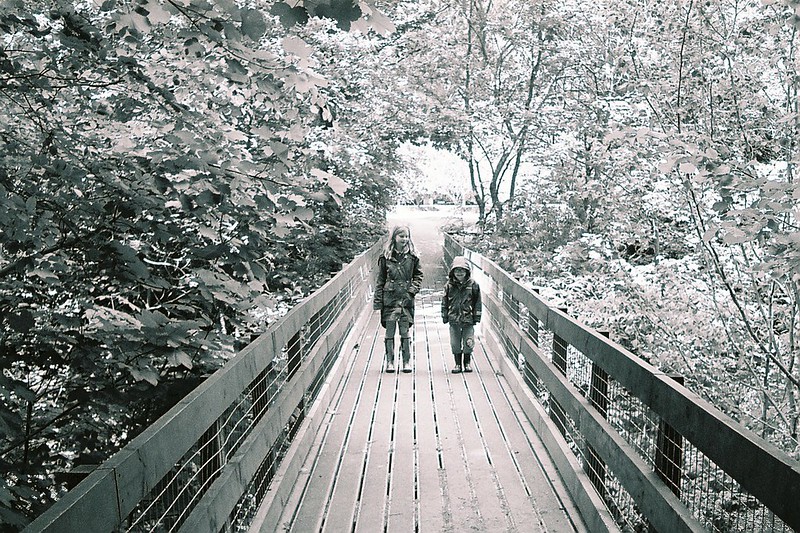
If you’ve shot a Trip, you’ll know the exposure system works well and with the PEN EE-2 it is no different. If anything it is more important in the fixed focus EE-2 as it preserves depth of field with only a modicum of diffraction (except in very bright light). In good light even despite the small frame size you get sharp images at most distances of its 1.5m to infinity range. Detail does get a bit lost at the extremes when blown up but you’ll still get usable small prints. The camera will perform well enough down to about 10 EV then things get increasingly more noticeable at the extremes. That said shots at 3-5 metres are still sharp. Obviously if that really bugs you, you can always get a EES or EES-2 but that negates the true point and shoot nature of it.
The frame size means the camera takes shots in portrait format naturally rather than landscape but the viewfinder whilst small is good and comes with the usual markings. The camera also is cable and standard tripod threaded and you have both hotshoe and PC sync options for flash (at 1/40 sec). It’s not without issues though. As well as becoming more limited in low light, it shares the same quirky door latch mechanism as the trip (you wonder how many have been knackered by folk wrenching the rewind knob off) and lack of a bulb setting. It does take filters but the odd Olympus 43.5mm size. Build quality is good but expect to have to replace the seals and the same issues that affect Trips apply here (sticky aperture blades etc). As usual with a selenium meter camera, I’d go for one that had a lens cap on – that said mines was a fiver punt on a mislabeled auction on eBay and came without cap.
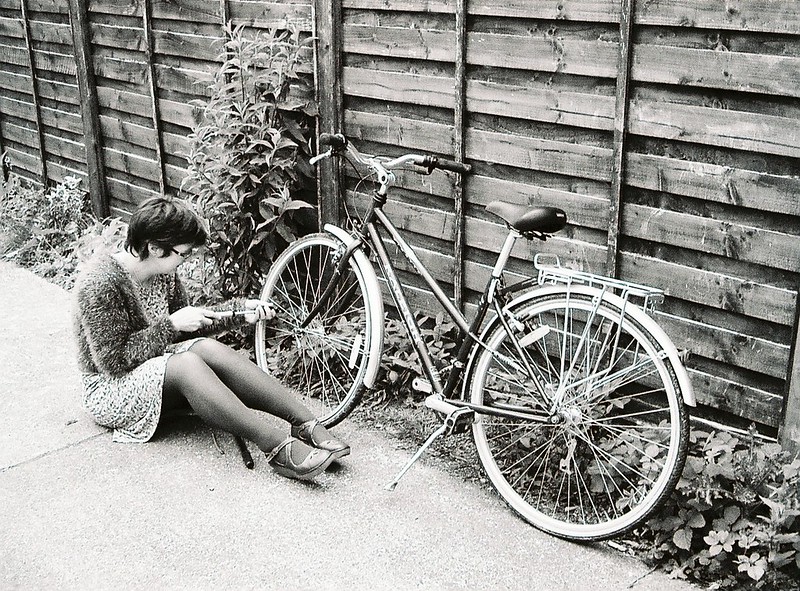
I’ve never had an issue getting lab processing for this and other half-frame cameras I use even in cheap supermarket labs. Image quality despite the smaller frame size is till pretty good thanks to modern film and scanning (it’s not far off APS-C size and about twice the frame size of 110 and as I’ve said you get 72 shots)

The EE-2 should have been replaced by the EE-3 in 1973 which replaced the aperture settings with a flashmatic setting based on a GN 14 flash, but remained in production up to 1977 – I suspect many folk like me prefered the old system. The EE-3 was produced until ’83. The EF which was broadly the same as the EE-2/3 but with built-in flash was the last launched in 1981. The range also featured ill-fated variants for Agfa rapid cartridges as well as easy load versions of the EE & EES. Two scale focus higher end CdS models were also made (EM and EED)
Summary
It is a small, retro, easy to use camera which in good conditions produce pretty sharp results and you can get 72 or more shots a roll. It oozes Olympus’s excellent build quality of this era and has handy features such as a cable point and filter threading. Obviously this ain’t a camera for all circumstances and it’s shrapness does fade as the light goes down especially at the extremes of the focal range. Still for a pocket-sized non AF point and shoot camera it is pretty astounding given it’s limitations and an excellent travel camera.
You can find more of my camera review on my own website – austerityphoto.co.uk
Share this post:
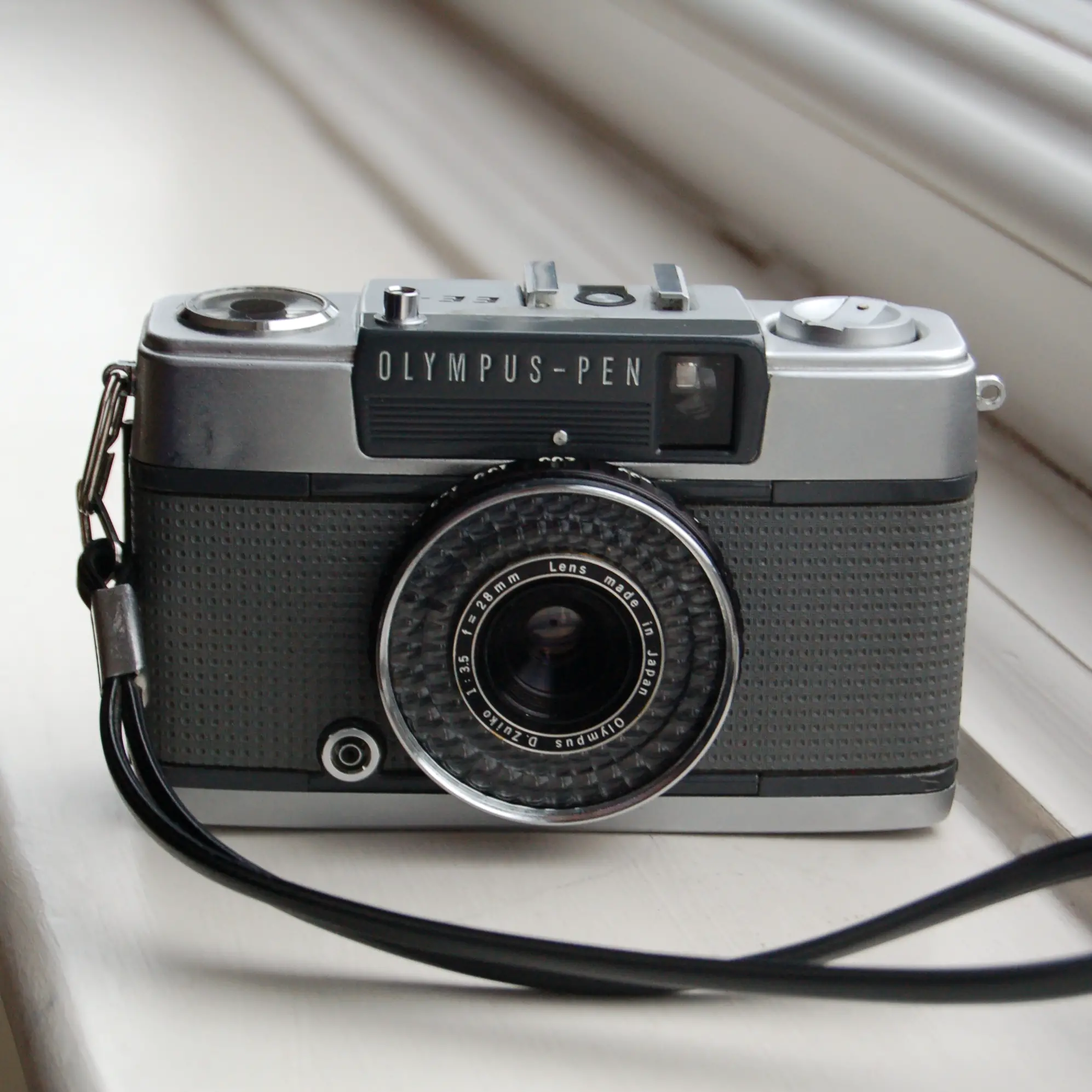








Comments
ErikP on Olympus PEN EE-2 Review – Fixed Perfection? – by Alan Duncan
Comment posted: 16/05/2016
Back in those days this phenomenon wasn't properly understood.
Why?
Because of film, thats why.
Film resolution back then - and even today - was so low that interference problems wasn't noticed, it was simply not detected, the only thing noticed was that depth-of-field increased as the lens was stopped down. Loss of sharpness was blamed on problems holding the camera still, simpleas that.
Theinterference problems was noticed with the advent of high resoluton digital cameras some 10 years ago.
The very simple Olympus auto-exposure systems was set up that way to cover as wide a range of EV numbers as possible, as simple as possible.
They got away with it due to the low light sensitiity in the selenum cells used, assoon as the changed to CDS meters we had a whole different ballgame, and much more elaborate exposure systems.
Comment posted: 16/05/2016
Comment posted: 16/05/2016
Comment posted: 16/05/2016
Comment posted: 16/05/2016
Comment posted: 16/05/2016
Comment posted: 16/05/2016
Comment posted: 16/05/2016
Blinx on Olympus PEN EE-2 Review – Fixed Perfection? – by Alan Duncan
Comment posted: 16/05/2016
Comment posted: 16/05/2016
Dallas Dina on Olympus PEN EE-2 Review – Fixed Perfection? – by Alan Duncan
Comment posted: 16/05/2016
love this camera...love olympus!
very interesting post, awesome photos. thank you. :)
Erik Prestmo on Olympus PEN EE-2 Review – Fixed Perfection? – by Alan Duncan
Comment posted: 17/05/2016
Improperly understood in the fifties, those involved with practical lens design and practical camer design usually drew the conclusion that diffraction did not matter, until at f:32 and smaller, and that was probably the cause for limiting apertures to f.22 and later f.16, going with high shutter speeds to secure exposure in bright sunlight instead.
So your argument is pure speculation, and cannot be verified. Look at the whole camera as a simple solution to a complex question instead.
Blinx: print sizes was 4 by 6 as a standard. But due to japanese economy, these half frames wasn't really made for print films, they where designed for slide films where they offered great economy, as long as the finishing houses offered "free" side mounts for up to 72 slides....
Paying for 72 prints on the other hand probably would kill the average japanese workers economy at the time, they'd lost a war and their cities had been incinerated.....
And,,, a Pen F SLRs image is not 50%, its 70% 70% distance measure, which is what concerns us here. 70% down, 140% up thats why a 28mm lens in an EE 2 is equal to about a 40mm lens in a Leica.
Comment posted: 17/05/2016
Comment posted: 17/05/2016
Comment posted: 17/05/2016
Blinx on Olympus PEN EE-2 Review – Fixed Perfection? – by Alan Duncan
Comment posted: 18/05/2016
Some of your points regarding focal lengths of different film formats I haven't raised, and are irrelevant to Alan's discussion. By the 1960s the colour print boom was in full swing, although it was still comparatively expensive compared to black and white photography. This was soon to be addressed by the 126 format (roughly square 35mm), and ultimately 110 (16mm) as well as new, finer grained emulsions like Kodacolor. Standard focal lengths in these formats is not the point, which seems to centre around the vexed subject of diffraction for some reason.
You appear to be under the misapprehension that Olympus in particular and photographic manufacturers as a whole didn't understand elementary light bending potential at small apertures, which is an astonishing claim as the physics had been written up in standard optical text books for a century. Camera makers saw the potential in the point and shoot market and had done since the Box Brownie. This meant choosing an aperture that allowed the deepest focal range for fixed focus cameras, for the available film speeds - and consequently shutter speeds - in a given film format. Olympus were one of the forerunners in popularising non-standard 35mm film framing as a way of extracting more than 36 frames from what was relatively expensive film. That was the sole motive for half frame.
The photo fashions and technology of the C20th are shown in Ilford's timeline: http://www.photomemorabilia.co.uk/Ilford/Chronology.html
Comment posted: 18/05/2016
Christos Theofilogiannakos on Olympus PEN EE-2 Review – Fixed Perfection? – by Alan Duncan
Comment posted: 18/05/2016
Comment posted: 18/05/2016
jeremy north on Olympus PEN EE-2 Review – Fixed Perfection? – by Alan Duncan
Comment posted: 19/05/2016
Carl Georg on Olympus PEN EE-2 Review – Fixed Perfection? – by Alan Duncan
Comment posted: 27/08/2016
Jaco van Lith on Olympus PEN EE-2 Review – Fixed Perfection? – by Alan Duncan
Comment posted: 08/11/2017
Is this the site for EVERY NARCIST WITH A CAMERA? Everybody can buy a camera, just a few can photograph.
And who will write the story on photography? Hardly anybody has the skills and knowledge.
Somebody is claiming that 15 ISO emulsion are no good. In the past 15 ASA ( 14 DIN) was a medium speed and
125 ASA was a high sensitive film. Simon and Garfukel sung Kodachrome. The 25 ASA Kodachrome film , the best film ever made.
Kodak Pan-X, Ilford Pan F, Orwo NP10, Agafa IF , Adox KB14 etc are "low" speed 15 ISO films with high quality.
A lot of nonsense is written about the type of films and on developing of films. Like "low speed film has a high contrast and high speed film has a low contrast". "Ortho film has high contrast and is only suitable for graphic application". "Reversal films are slide films". Etc.
The most shocking story on photographic emulsions was told by several Dutch photographers to me in
The Netherlands in 1965. Some photographers claimed that the bromid printingpapar of the Hungarian brand of
FORTE had a shortage of silver in the emulsion. Having compared Forte paper to ten other brands like Agfa, Ilford, Gevaert, Ferrania, Orwo, Kodak, Argenta etc.; the shock was enormous. The firm of Ilford noted that the negatives printed on Forte paper were the best. ( I made the Forte print myself, the rest was done by professional labs).
It was a great pleasure for me to inform mrs. Albers the director of the the photoshop of Foka in Rotterdam in The Netherlands, which was the import company of Forte photographic paper,: Forte photgraphic paper is the best.
Panchromatic 3200 ISO films were quite normal in 1990. Mind the polar expedition to the South Pole in 1913; the photographic glassplates at the South Pole had a sensetivity of 7 ISO. The negatives had a normal contrast, though the conditions were extreme difficult. The temperature was low. The sunlight was very bright with the reflection of the snow on the ground.
A hundred years ago there was much more craftmanship than today. The whole internet is polluted by silly stories of so called wise pros and amateurs. who had never seen a Kodak Jobsheet.
There is so much quality in an old 7 ISO negative, that enlargements of 2 x 3 m can be made today.
Comment posted: 08/11/2017
Zuiko on Olympus PEN EE-2 Review – Fixed Perfection? – by Alan Duncan
Comment posted: 08/03/2018
Another advantage was that you did not have to worry about batteries because the automatic exposure meter was powered by solar cells. In a way it was more advanced than today's digital cameras which eat up batteries fast.
It was still working perferctly 30 years later when I gave it to a friend who was amazed that such a small and beautiful camera could shoot 75 pictures on a 35mm film with perfect precision.
I always carried it on me because it was so small and it never let me down. They don't make cameras like that any more, certainly not at that price.
Jorge Rebello on Olympus PEN EE-2 Review – Fixed Perfection? – by Alan Duncan
Comment posted: 09/09/2018
Olympus Pen EE-S (1962) - mike eckman dot com on Olympus PEN EE-2 Review – Fixed Perfection? – by Alan Duncan
Comment posted: 05/03/2019
Spotmatic Frank on Olympus PEN EE-2 Review – Fixed Perfection? – by Alan Duncan
Comment posted: 20/08/2019
Comment posted: 20/08/2019
Spotmatic Frank on Olympus PEN EE-2 Review – Fixed Perfection? – by Alan Duncan
Comment posted: 24/09/2019
Comment posted: 24/09/2019